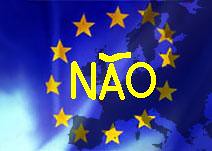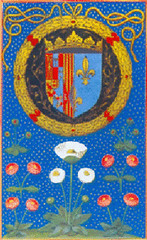Intellectual and Cultural Property Rights of Indigenous and Tribal Asian Peoples
This report looks at efforts by the UN and governments to protect indigenous and tribal heritage from exploitation; the pressures on governments to allow exploitation of indigenous knowledge; the many initiatives taken by Asian indigenous and tribal peoples to protect their heritage; and the effects of the General Agreement on Tariffs and Trade (GATT) and the Trade-Related Aspects of International Property Rights agreement (TRIPS) on indigenous peoples' intellectual property rights.
The report begins with a section on the definition of indigenous peoples' intellectual and cultural property rights. A variety of struggles of indigenous peoples are described, followed by an examination of the steps indigenous peoples have taken to assert their intellectual and cultural property rights through the Mataatua Declaration (1993) and the Charter of the Indigenous-Tribal Peoples of the Tropical Forests (1992). UN efforts are set out in the next section, together with some discussion of their limitations. Governments' efforts to protect intellectual and cultural property rights on biodiversity, through law-making, the creation of databases documenting traditional knowledge, and formal research are also examined. A description of the relations between intellectual property regimes and biodiversity, and the effects of TRIPS is followed by a look at the phenomenon of biopiracy, and indigenous peoples' resistance to it, on a country-by- country basis.
The Conclusion discusses strategies for indigenous peoples' continuing struggle for their intellectual and cultural property rights. Arguing that existing IPR/trade regimes are not apropriate to protect indigenous peoples' intellectual and cultural property rights, the report proposes several possible alternative regimes, including:
* the adoption of community-based IPR and resource rights regimes
* civil society resistance and challenges to dominant IPR regimes
* the revival of farming and medicinal systems
* the adoption of 'sui generis' forms of intellectual property protection where Inventors' Certificates can be used to reject financial compensation in favour of non- monetary awards and non-exclusive licensing arrangements
* the adoption of the Model Law on Folklore which affords indigenous communities elements appropriate for the protection of biological products and processes
The report also has recommendations for governments who have indigenous peoples within their territories, such as:
* ratifying ILO Convention 169 and other international
agreements related to the rights of indigenous peoples
* incorporating the concept of 'Prior Informed Consent' of
indigenous and local communities into national legislation
* facilitating the repatriation of cultural property to
rightful indigenous owners
* ensuring that the rights of indigenous peoples to own and
benefit from their ancestral lands and territories are
fully protected in their domestic laws and policies
* suspending projects in indigenous peoples' territories
that were initiated without their full and prior informed consent.
- Bengwayan, M.A. (.pdf)
Minority Rights Group International (MRG) (2003)
The report begins with a section on the definition of indigenous peoples' intellectual and cultural property rights. A variety of struggles of indigenous peoples are described, followed by an examination of the steps indigenous peoples have taken to assert their intellectual and cultural property rights through the Mataatua Declaration (1993) and the Charter of the Indigenous-Tribal Peoples of the Tropical Forests (1992). UN efforts are set out in the next section, together with some discussion of their limitations. Governments' efforts to protect intellectual and cultural property rights on biodiversity, through law-making, the creation of databases documenting traditional knowledge, and formal research are also examined. A description of the relations between intellectual property regimes and biodiversity, and the effects of TRIPS is followed by a look at the phenomenon of biopiracy, and indigenous peoples' resistance to it, on a country-by- country basis.
The Conclusion discusses strategies for indigenous peoples' continuing struggle for their intellectual and cultural property rights. Arguing that existing IPR/trade regimes are not apropriate to protect indigenous peoples' intellectual and cultural property rights, the report proposes several possible alternative regimes, including:
* the adoption of community-based IPR and resource rights regimes
* civil society resistance and challenges to dominant IPR regimes
* the revival of farming and medicinal systems
* the adoption of 'sui generis' forms of intellectual property protection where Inventors' Certificates can be used to reject financial compensation in favour of non- monetary awards and non-exclusive licensing arrangements
* the adoption of the Model Law on Folklore which affords indigenous communities elements appropriate for the protection of biological products and processes
The report also has recommendations for governments who have indigenous peoples within their territories, such as:
* ratifying ILO Convention 169 and other international
agreements related to the rights of indigenous peoples
* incorporating the concept of 'Prior Informed Consent' of
indigenous and local communities into national legislation
* facilitating the repatriation of cultural property to
rightful indigenous owners
* ensuring that the rights of indigenous peoples to own and
benefit from their ancestral lands and territories are
fully protected in their domestic laws and policies
* suspending projects in indigenous peoples' territories
that were initiated without their full and prior informed consent.
- Bengwayan, M.A. (.pdf)
Minority Rights Group International (MRG) (2003)







